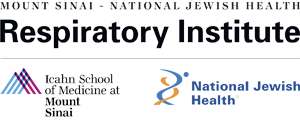Types of Pulmonary Function Tests
Pulmonary function tests are used to assess your lung function or capacity. The tests will be performed at rest or during exercise. Your results are standardized (adjusted) based on your age, gender, race, and height. These tests include:
- Spirometry
This is a very basic breathing test to assess the amount of air you inhale and exhale as a function of time. It also calculates the speed (flow) of air that can be inhaled or exhaled. The test itself involves normal and deep breaths as well as breathing out as hard as you can into a tube with a sensor for measurement.
- Lung Volumes
This test measures the volume of air in the lungs at different phases of the breathing cycle. It is performed using a machine called the plethysmograph. You are seated during the test and will be asked to breathe in and out and sometimes to pant. The test is particularly helpful in distinguishing between restrictive lung diseases such as pulmonary fibrosis and obstructive lung diseases such as asthma.
- Gas Exchange Testing (DLCO)
This test measures the extent to which oxygen passes from the air sacs of the lungs to the blood. The test is important in assessing many different lung diseases and involves normal and deep breathing as well as holding your breath briefly.
- Maximal Voluntary Ventilation (MVV)
This measures the maximal amount of air that can be inhaled and exhaled in one minute. The test, generally carried out over 15 seconds, will require you to breathe in and out as forcefully as possible. This test can be helpful in assessing the overall function of the respiratory system. It may be reduced in cases of asthma, upper airway obstruction, stiffness of the respiratory system, and with respiratory muscle weakness.
- Inspiratory and Expiratory Muscle Pressures (PI and PE max)
These tests specifically assess the pressures that can be generated by the respiratory muscles and are important in evaluation of possible neuromuscular disease.
- Oxygen Titration Test
This test is used to determine the need for oxygen and to check that patients already on oxygen at home are receiving the right amount. The oxygen saturation is measured by a noninvasive device called an oximeter and the heart rate is recorded as well. The flow of oxygen is adjusted to maintain acceptable levels of oxygen in the blood stream and a report is created to validate the need for oxygen therapy.
- Six-Minute Walk Test
This test literally measures how far you can walk in 6 minutes and provides an assessment of your functional status or ability to perform daily activities.
- Methacholine Challenge Test
This is a test to assist in the diagnosis of asthma. During the test, you will be asked to breathe in a mist of a solution of Methacholine, which causes “twitchiness” of the airways at low doses in people who have asthma or asthma-like conditions. After each dose you inhale, you will be asked to breathe out forcefully into a tube with a sensor. We will monitor change in your lung function after each dose and stop the test if your lung function falls by 20 percent. Any breathing problems that you may experience from the test will be reversed by a medication called albuterol, used normally in the treatment of asthma.
- Cardiopulmonary Exercise Testing
This is a test that assesses your exercise capacity. In most cases you will be asked to ride a stationary bicycle and we will monitor your heart and lung function at rest, during a warm up phase, during a short period of exercise and during “recovery” when you are no longer peddling. The test is extremely helpful in evaluating causes of shortness of breath or decreased exercise tolerance. Exercise testing can also be conducted on a treadmill.
- Fractional Exhaled Nitric Oxide (FeNO)
This test assists in the diagnosis and management of a variety of lung diseases but particularly in the assessment of allergic asthma. Nitric oxide is produced in the breathing passages and is a marker of allergic inflammation. The test takes about one minute to perform and involves breathing out first, then taking a deep breath and exhaling at a slower, constant rate.
- Impulse Oscillation or Forced Oscillation Testing (IOS)
This is a relatively new test that assesses how narrow your airways are by measuring airway resistance. The test can distinguish between the resistance of the large and small airways and can also measure the stiffness of your lungs. The test requires that you breathe in and out quietly for 30 seconds at a time. This test is easier to perform than spirometry and can even be done in young children.
- Compliance Testing
This test measures the stiffness or elasticity of the lungs and can be helpful in diagnosing a variety of different lung conditions. The test requires that we insert a very small catheter (i.e., tube) with a soft uninflated balloon down your nasal passage into the esophagus in order to estimate the pressure surrounding the lung. The catheter will remain in place for a short period of time while the test is being conducted.
- High Altitude Simulation Testing
This is a test that allows us to estimate your blood oxygen levels in high altitudes. This is particularly important for patients who have lung disease and are dependent on oxygen at sea level. We can use the results to prescribe the correct flow of oxygen for you when you fly or when you are visiting an area at high altitude. The test involves breathing into a mask that simulates the lower oxygen levels found at high altitude. We will monitor your symptoms and oxygen levels closely.
